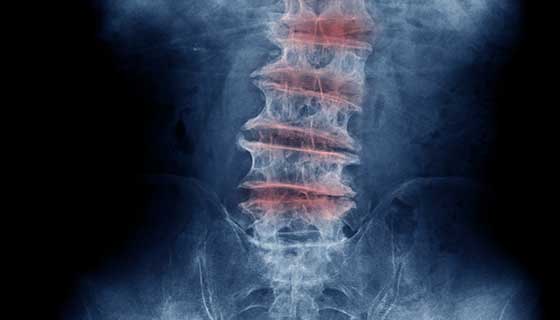
Pain from degenerative disc disease can be debilitating, but you have options.
Here are several treatment options and ways to think about managing your degenerative disc disease. Hopefully one or a few of these will work for you.
Exercise Relieves Pain
Most people don't associate exercise with pain relief, but when it comes to degenerative disc disease, exercise is an elixir of sorts. It spurs blood flow and builds the supporting structures around the affected disc so that the impact of degeneration is lessened.
Of course, if you're in pain, it's hard to start exercising in the first place. Before you begin, it's important to find a way to bring your pain levels down at least enough to get started with some exercise.
People who can achieve this balance—keeping their pain to a manageable level so they can commit to an effective exercise and stretching routine—will often find that they can manage their pain well enough, continue to enjoy most everyday activities, and avoid a fusion or other type of major surgery.
- Control your pain - Many people with disc degeneration need to both control pain and reduce the inflammation around the affected disc. Inflammation often contributes to pain, so it is important to try to keep inflammation to a minimal level.
- Sometimes, simply applying ice or a cold pack to your area(s) of pain on a regular basis can help bring it down.
- Additionally, non-steroidal anti-inflammatories (NSAIDs) such as Aleve or Advil, when coupled with a pain reliever such as Tylenol, can provide significant relief.
- If pain persists, stronger prescription medications may be considered. Just be sure about the appropriate dosage and possible side effects before you start taking any medicine.
Once your pain is relieved, you can begin to...
- Exercise - Improving muscle support through strength and resistance exercises, plus maintaining heart health and a healthy weight through cardio exercise, are all components of a pain relief plan.
Remaining flexible through stretching, particularly for the hamstring muscles and hip flexors, will also help.
Make Everyday Lifestyle Changes
While it may seem obvious, subtle everyday changes can add up to significant pain relief for those with degenerated discs, and cost little in terms of time or money.
- Modify or stop activities that hurt the back - It may be hard to give up the Saturday basketball game or scale back on golf, but doing so will minimize twisting the back. The same goes for lifting large or heavy objects.
In general, avoid or minimize any activities that make your back feel worse.
- Support your back throughout the day - In the past few years, many companies have designed ergonomic chairs that are more supportive of your lower back. In addition, many people find it helpful to work at a standup desk for at least part of the day.
Changing how you sleep, using different pillows, and/or considering a new mattress can help provide better spinal alignment and support throughout the night. Adjustable beds are no longer just for the hospital—if you find that you're most comfortable in a recliner, then consider sleeping in a semi-upright position with an adjustable bed, or simply by adding a foam-wedge pillow to your regular bed.
Precision Pain Care and Rehabilitation has two convenient locations in Richmond Hill – Queens and New Hyde Park – Long Island. Call the Richmond Hill office at (718) 215-1888, or (516) 419-4480 for Long Island office, to arrange an appointment with our Interventional Pain Management Specialist, Dr. Jeffrey Chacko.













